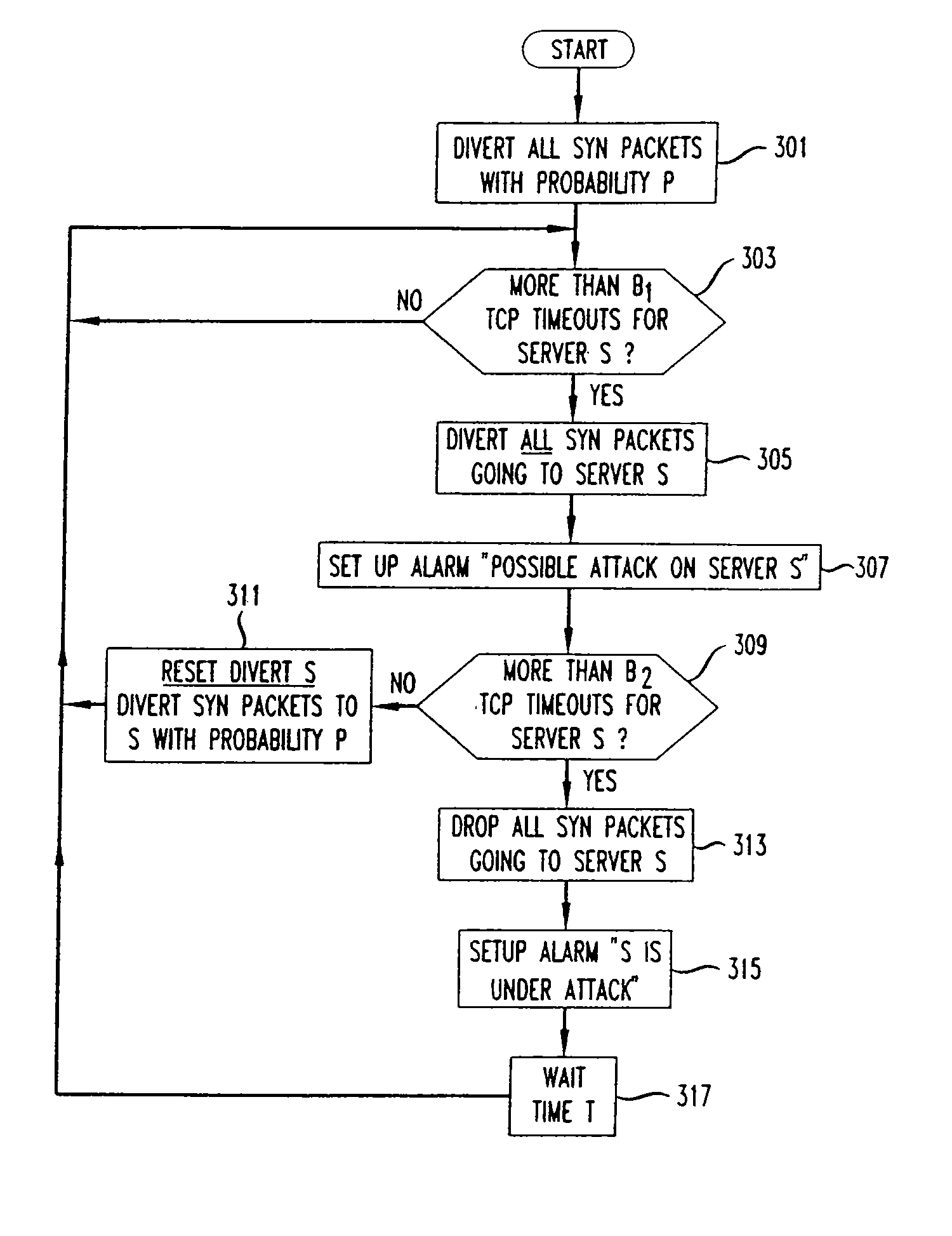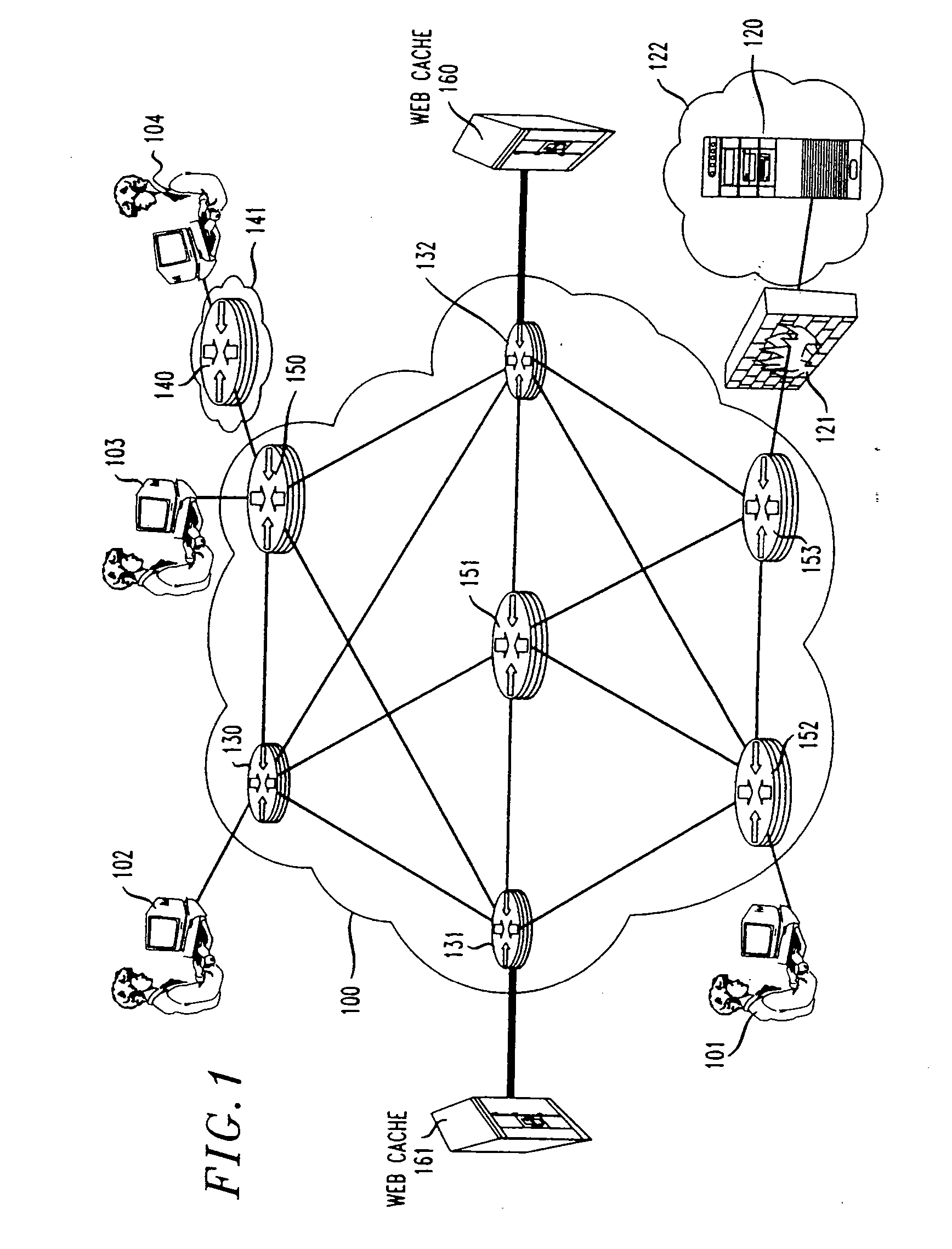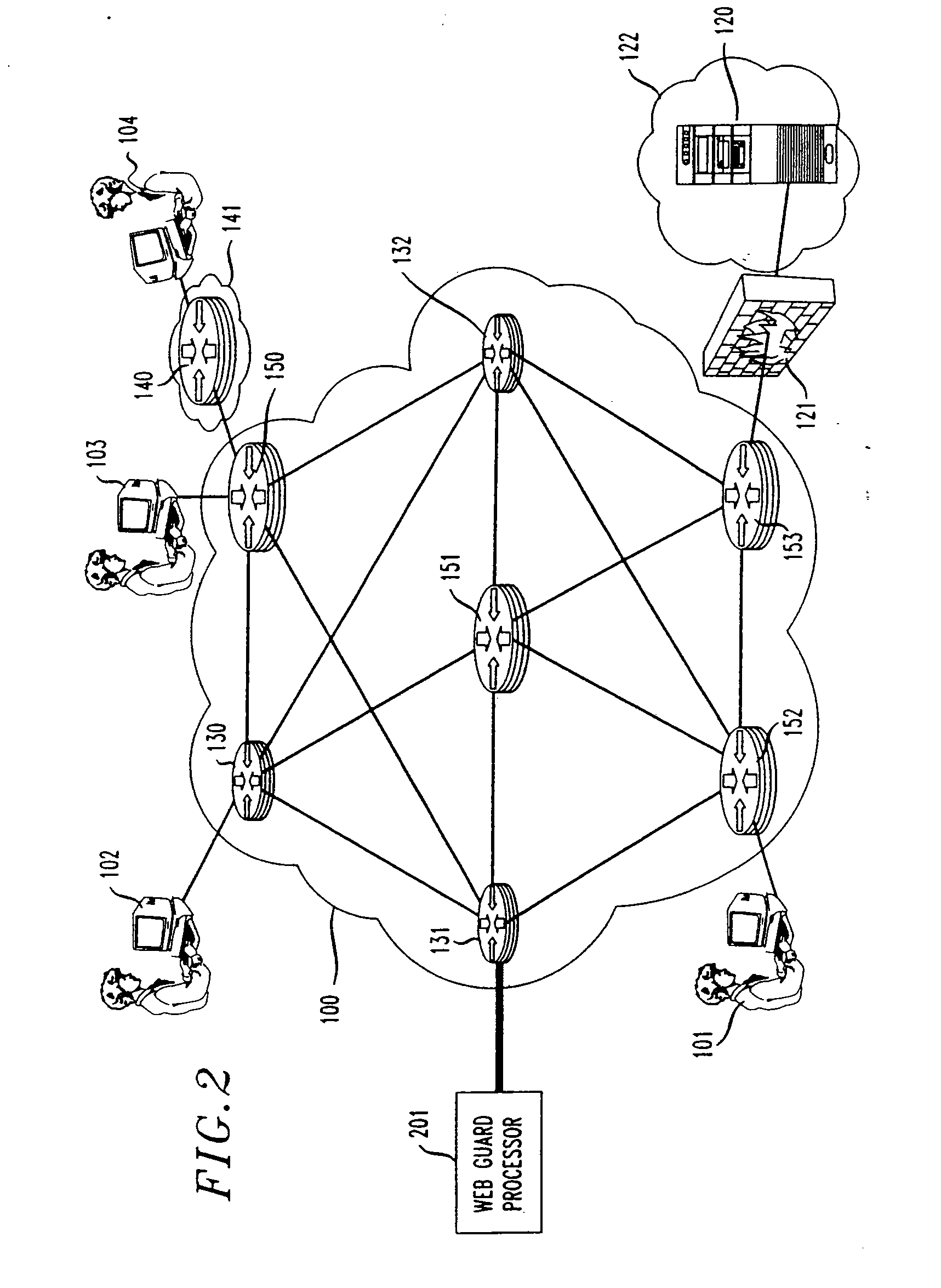Process to thwart denial of service attacks on the internet
a technology of denial of service and process, applied in the field of security, can solve the problems of reducing performance, bringing the entire network down, and the most common and dangerous types of attacks, and achieve the effect of improving the ability to thwart, being inexpensive to install and opera
- Summary
- Abstract
- Description
- Claims
- Application Information
AI Technical Summary
Benefits of technology
Problems solved by technology
Method used
Image
Examples
Embodiment Construction
[0013] In order to put the present invention in the appropriate context, it will be helpful to first review the infrastructure elements presently in use by context delivery companies and Internet Service Providers (ISPs) to provide fast and reliable delivery of information to users over the Internet. Referring to FIG. 1, a group of users or clients 101-104 are shown at workstations or home computers that are connected to various elements in the Internet 100. Internet 100 includes a plurality of interconnected routers 150-154, and layer 4-7 switches 130-132. The arrangement and capabilities of these elements is well known to those skilled in the art. Examples of level 4 switches are switches in the IPW or X™ WebDirector family available from Lucent Technologies. Examples of layer 7 switches are the switches in the AppSwitch™ 3500 family available from Top Layer Networks. In FIG. 1, client 104 is shown as being connected to Internet 100 via a router 140 within an Intranet 140. This ar...
PUM
 Login to View More
Login to View More Abstract
Description
Claims
Application Information
 Login to View More
Login to View More - R&D
- Intellectual Property
- Life Sciences
- Materials
- Tech Scout
- Unparalleled Data Quality
- Higher Quality Content
- 60% Fewer Hallucinations
Browse by: Latest US Patents, China's latest patents, Technical Efficacy Thesaurus, Application Domain, Technology Topic, Popular Technical Reports.
© 2025 PatSnap. All rights reserved.Legal|Privacy policy|Modern Slavery Act Transparency Statement|Sitemap|About US| Contact US: help@patsnap.com



